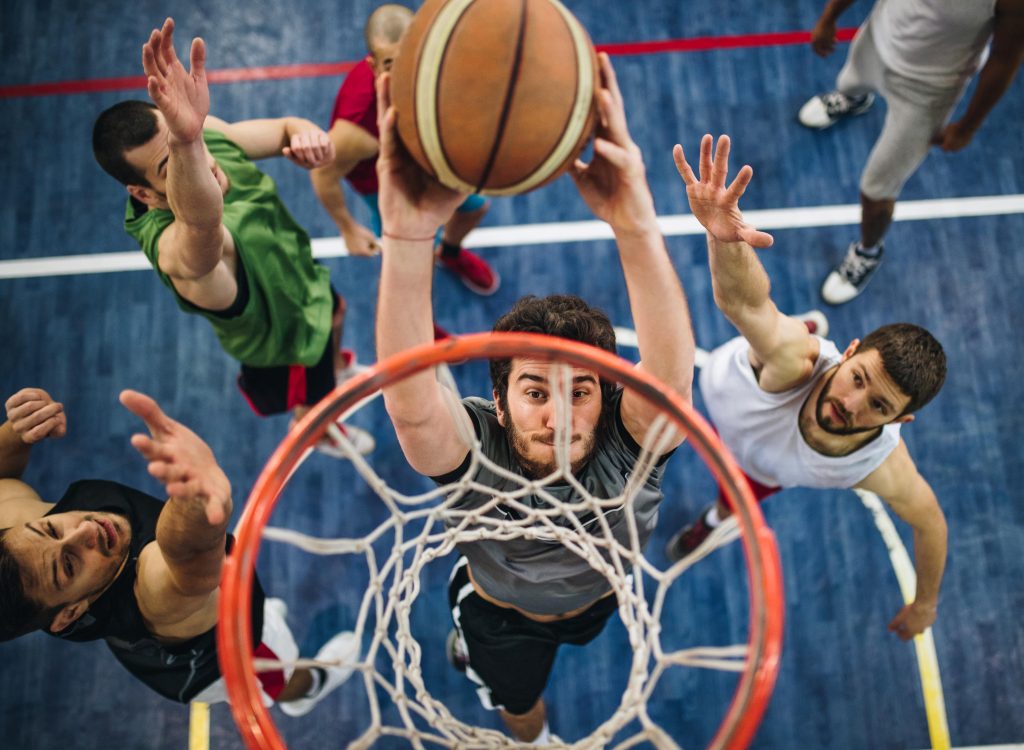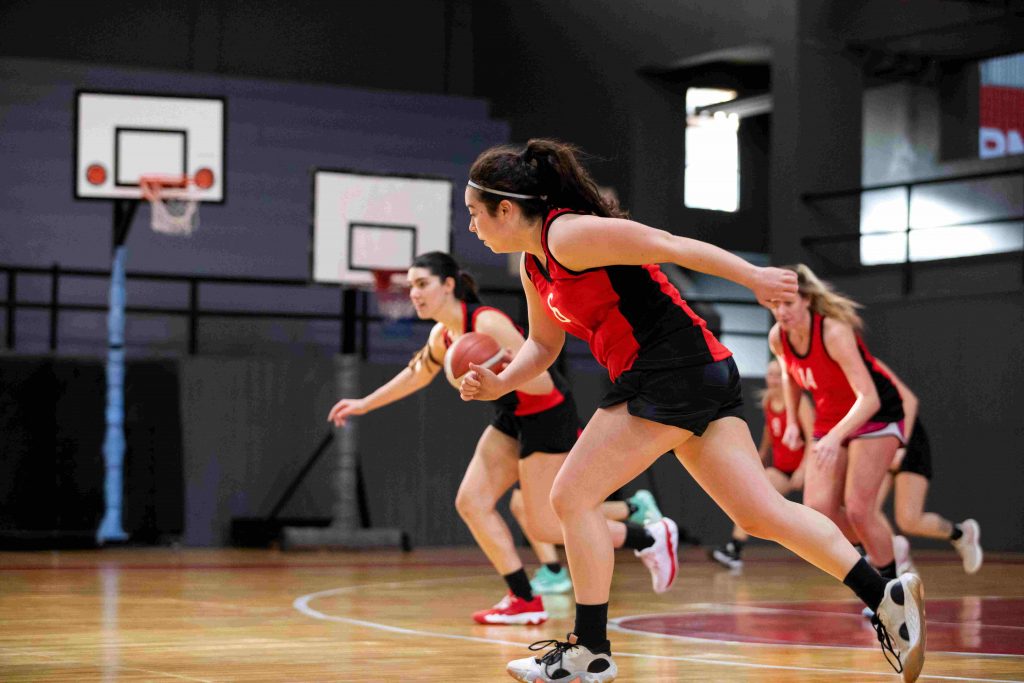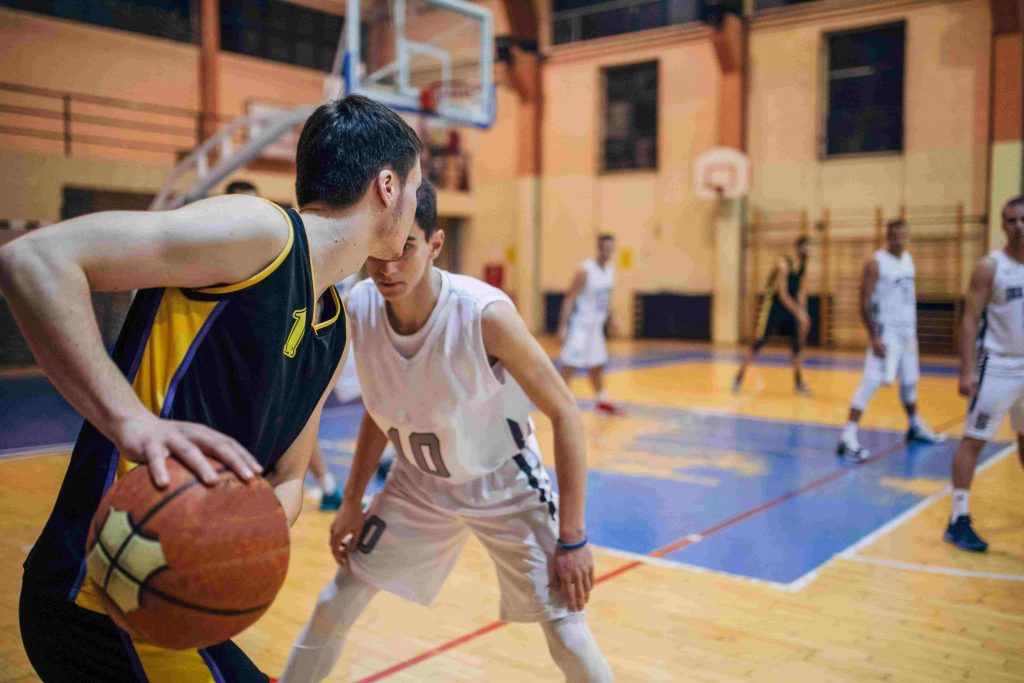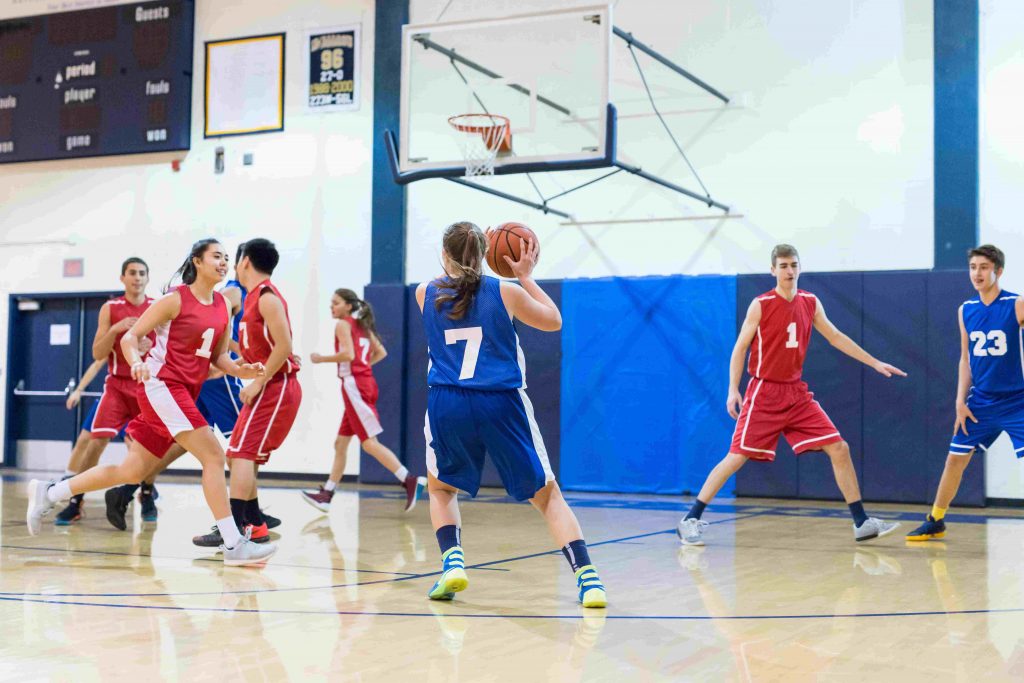Basketball is a dynamic and fast-paced game, and one of the most exciting parts of the sport is the variety of basketball positions and how each player contributes to the team. Whether you’re a newcomer to the sport or a seasoned player looking to sharpen your skills, understanding the different positions in basketball is crucial.
In this guide, we’ll examine each basketball position, including its roles, required skills, and the play area it typically covers on the court. We’ll also touch on hybrid positions and answer some common questions about basketball positioning.

What are the positions in basketball?
In a standard basketball game, teams have five players, each playing a specific role on the court. While the traditional positions are well-known, basketball has evolved, and we now see hybrid positions emerging. A hybrid position is one where a player combines the responsibilities of multiple traditional positions, offering greater flexibility and adaptability in play.
Let’s explore each of the main basketball positions, looking at the unique skills and roles needed for each one.
1. Point Guard (PG) – The Court General
Role: The point guard is often called the “floor general” or “playmaker”. This player is responsible for directing the attack and ensuring that plays are carried out correctly. As the leader on the floor, the point guard brings the ball up the court, sets up attacking plays, and looks for opportunities to assist teammates in scoring.
Skills:
- Court vision: The ability to see the entire court and anticipate plays.
- Ball handling: Point guards need excellent dribbling and control to navigate around defenders and move the ball efficiently.
- Passing: Precision and creativity in passing are important for setting up teammates.
- Leadership: Point guards often act as a coach on the floor, guiding the team’s offensive strategy.
- Speed: Being quick on the attack and defence allows point guards to create opportunities.
Play area: The point guard typically handles the ball for most of the possession, staying near the top of the key or beyond the three-point arc. On defence, they focus on guarding the opposing point guard and disrupting offensive plays.
2. Shooting Guard (SG) – The Scorer
Role: The shooting guard is often one of the team’s primary scorers, focusing on shooting from long-range and mid-range. This player is expected to be a versatile member who can both create their own shot and spot up for an assist from teammates.
Skills:
- Shooting: Skilled in both long-range shots (three-pointers) and mid-range jumpers.
- Finishing at the rim: Strong ability to drive to the basket and finish with confidence.
- Off-ball movement: Shooting guards need to be effective in moving without the ball to create open shooting opportunities.
- Defence: A good shooting guard is often also a solid defender, capable of guarding the opposing shooting guard or small forward.
Play area: Shooting guards frequently operate around the perimeter, moving around screens to get open shots. They also push to the basket and occasionally play on defence, guarding opposing perimeter players.

3. Small Forward (SF) – The All-Around Player
Role: The small forward is often the most versatile player on the team. This position needs a mix of skills, as the small forward is expected to score, assist, and play defence. Often, they are the players who can do a little bit of everything, making them an essential part of the team’s success.
Skills:
- Scoring: Small forwards need to be skilled in scoring from various positions, driving to the basket, shooting mid-range jumpers, and hitting three-pointers.
- Rebounding: Small forwards need to be capable of collecting rebounds, especially on the defensive end.
- Passing: While not their main role, small forwards should be able to assist in creating scoring opportunities.
- Defence: This player must be capable of guarding multiple positions, from shooting guards to power forwards.
Play area: The small forward plays both in the paint and on the perimeter. They guard the opposing team’s best wing player or big man on defence.
4. Power Forward (PF) – The Post Player
Role: The power forward is a key player in offence and defence near the basket. Their role revolves around rebounding, setting screens, and scoring in the post. Power forwards are often the bruisers of the team, battling in the key area for rebounds.
Skills:
- Rebounding: Power forwards are expected to be strong, both offensively and defensively.
- Post moves: Being effective in the post is essential, with various moves for scoring close to the basket.
- Mid-range shooting: Many power forwards have developed a solid jump shot.
- Defence: Power forwards are often tasked with guarding opposing forwards and big men in the paint.
Play area: Power forwards typically play offensively and defensively in the post area. On offence, they often play near the basket and are responsible for grabbing the opposing rebounds.
5. Centre (C) – The Anchor
Role: The centre is usually the tallest player on the team and is considered the anchor of the defence. Centres are responsible for scoring in the paint, blocking shots, and grabbing rebounds. They play an important role in protecting the rim and securing defensive rebounds.
Skills:
- Rebounding: Centres are often the team’s best rebounders, especially on defence.
- Shot-blocking: Ability to protect the basket by blocking or altering shots.
- Post play: Centres are expected to score in the low post, using their size and strength to overpower defenders.
- Set Screens: They should be able to set solid screens to block a defensive player.
Play area: Centres usually play near the basket on offence, scoring in the post. Defensively, they protect the rim and often guard opposing centres or power forwards in the paint.
Hybrid basketball positions
As basketball has evolved, players have become more versatile, leading to the rise of hybrid positions. These players combine the responsibilities of two or more traditional positions, allowing them to fill multiple roles on the court. Some examples include:
- Combo Guard (Point Guard/Shooting Guard): A player who can act as the playmaker and primary scorer.
- Stretch Forward (Power Forward/Small Forward): A player who can play both forward positions and is often a reliable three-point shooter.
- Point Forward (Point Guard/Small Forward): A forward who handles the ball and directs the offence, similar to a point guard.

FAQs: Common questions about basketball positions
How many positions are there in basketball?
The five traditional positions in basketball are:
- Point Guard (PG)
- Shooting Guard (SG)
- Small Forward (SF)
- Power Forward (PF)
- Centre (C)
But with the rise of hybrid roles, many players today play multiple positions in one game.
What is the fastest position in basketball?
The point guard is usually the fastest player on the court. Point guards often push the ball up the court and need to have excellent speed and agility to be effective playmakers.
What is a point guard in basketball?
A point guard is the player who is responsible for running the offence and distributing the ball to other players. They are often the floor leader, setting up plays and ensuring the team’s offensive flow runs smoothly.
Which basketball position will you play?
Understanding basketball positions is key to appreciating how the game is played and how players contribute to their team’s success. Whether you’re a point guard directing the offence, a shooting guard shooting the shots, or a centre defending the rim, every basketball player position plays a unique and important role. The hybrid positions add an extra layer of flexibility, showing how the game has evolved.
For coaches and players looking to improve their understanding of the game, focusing on basketball positioning and mastering the skills needed for each position is essential. And, of course, don’t forget to focus on health and safety. Embrace your role on the court, and most importantly, have fun playing the game.

Specialist basketball insurance through Insure4Sport
Whichever position you decide to play, you may want to consider getting specialist basketball insurance through Insure4Sport.
Specialist basketball insurance through Insure4Sport can help provide financial protection and peace of mind should you suffer an injury and be unable to work (Loss of Earnings) or injure another player or their property while you play (Public Liability). You can even get cover for your sports equipment should it be accidentally damaged, lost, or stolen.
Find out more about specialist basketball insurance or get a quick online quote today.



